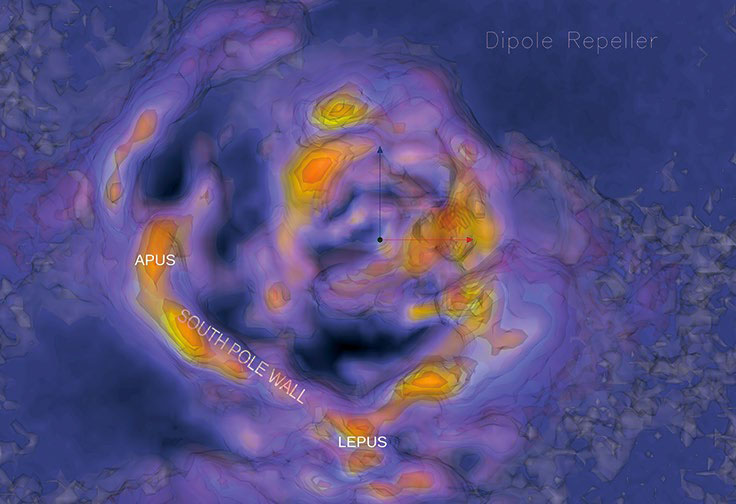Spectacular 3D maps of the universe have revealed one of the biggest cosmic structures ever found - an almost-inconceivable wall stretching 1.37 billion light years across that contains hundreds of thousands of galaxies. The South Pole Wall, as it’s been dubbed, has been hiding in plain sight, remaining undetected until now because large parts of it sit half a billion light years away behind the bright Milky Way galaxy. The South Pole Wall rivals in size the Sloan Great Wall, the sixth-largest cosmic structure discovered. One light year is roughly nine trillion kilometres (six trillion miles), so this cosmic structure is mind-bendingly humongous.

© D. Pomarede, R. B. Tully, R. Graziani, H. Courtois, Y. Hoffman, J. Lezmy.
Astronomers have long noticed that galaxies are not scattered randomly throughout the universe, but rather clump together in what’s known as the cosmic web, enormous strands of hydrogen gas in which galaxies are strung like pearls on a necklace that surround gigantic and largely empty voids.